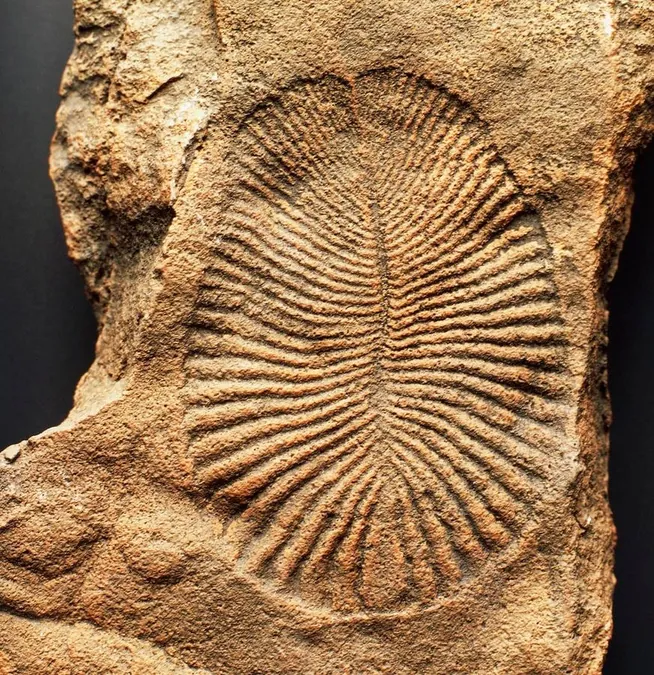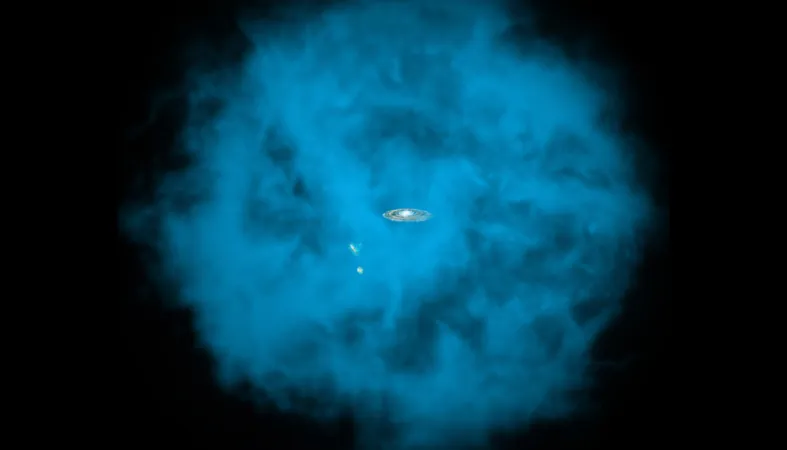
Unveiling Dickinsonia: The Ancient Animal That Redefined Evolution
2025-04-14
Author: Jacques
An Ancient Puzzle Emerges
For years, scientists believed that all complex animal life originated from the Cambrian explosion over 500 million years ago. However, the astonishing discovery of Dickinsonia, an intriguing member of the Ediacaran biota, challenges everything we thought we knew about evolution.
Dating back approximately 558 million years, Dickinsonia exists in a time before the Cambrian explosion, raising significant questions about early animal growth, movement, and developmental strategies. Its fossil imprints provided vital insights into the origins of complex life and the mysteries of early animal physiology.
A Game-Changer: The 2018 Revelation
The landscape of paleontology shifted dramatically in 2018 when researchers identified distinct molecular signatures present in Dickinsonia fossils, particularly cholesterol derivatives. This groundbreaking finding solidified its status as one of the oldest known animals in evolutionary history.
The Fascinating Discovery of Dickinsonia
First uncovered in the late 1940s in the Flinders Ranges of South Australia by paleontologist Reg Sprigg, Dickinsonia boasts a unique quilted appearance. Named after Ben Dickinson, a local government official, its fossils have been located across various continents, indicating a wide geographical presence during the Ediacaran period.
Indeed, these ancient organisms left behind only impressions or casts in quartz sandstones, typical of soft-bodied creatures that lacked durable skeletal structures.
Breaking Down the Classification Conundrum
Initially, Dickinsonia's classification sparked heated debates. Was it a jellyfish, a giant protist, or a fungus? The truth remained elusive as its morphological features bore little resemblance to modern animals.
However, innovative geochemical methods allowed scientists to analyze the molecules within Dickinsonia, revealing cholesterol derivatives that are exclusive to animal cell membranes. This critical evidence shifted perspectives, strongly supporting the idea that Dickinsonia is indeed an ancient animal.
Life in Ancient Seas
Researchers theorize that Dickinsonia thrived on shallow marine substrates, slowly 'crawling' and feasting on microbial mats through external digestion, much like modern placozoans.
As more evidence accumulated, Dickinsonia began to be viewed as an early relative of simple animals, potentially part of a unique lineage that contributed to the rise of bilateral symmetry in later species.
Revisiting the Evolutionary Timeline
The status of Dickinsonia as a bona fide animal reshapes our understanding of the Cambrian explosion—the significant burst of evolutionary innovation that led to most existing animal phyla.
Previously considered evolutionary dead ends, Ediacaran organisms like Dickinsonia are now viewed as critical stepping stones toward the complex life forms we see today. Their unique biological features establish them as a credible evolutionary link between simple organisms and the eventual rise of hard-bodied animals.
Ediacaran Biota: A Prelude to Diversity
The significance of Dickinsonia extends far beyond its own existence. By understanding its role in the evolutionary narrative, we can appreciate how the Ediacaran biota set the stage for the remarkable diversification of animal life. Thus, rather than mere experiments, these ancient organisms were crucial players in the grand saga of evolution.









 Brasil (PT)
Brasil (PT)
 Canada (EN)
Canada (EN)
 Chile (ES)
Chile (ES)
 Česko (CS)
Česko (CS)
 대한민국 (KO)
대한민국 (KO)
 España (ES)
España (ES)
 France (FR)
France (FR)
 Hong Kong (EN)
Hong Kong (EN)
 Italia (IT)
Italia (IT)
 日本 (JA)
日本 (JA)
 Magyarország (HU)
Magyarország (HU)
 Norge (NO)
Norge (NO)
 Polska (PL)
Polska (PL)
 Schweiz (DE)
Schweiz (DE)
 Singapore (EN)
Singapore (EN)
 Sverige (SV)
Sverige (SV)
 Suomi (FI)
Suomi (FI)
 Türkiye (TR)
Türkiye (TR)
 الإمارات العربية المتحدة (AR)
الإمارات العربية المتحدة (AR)